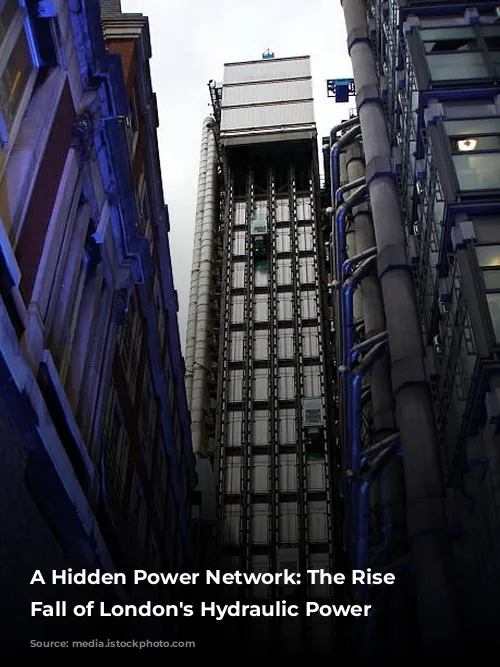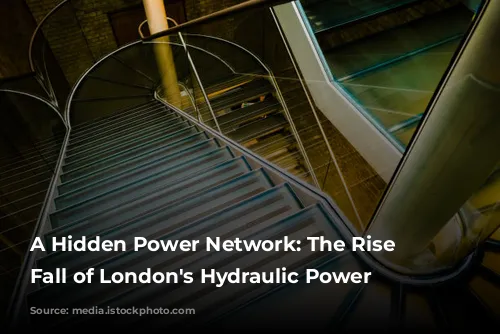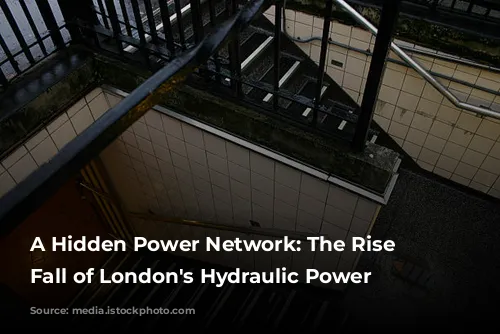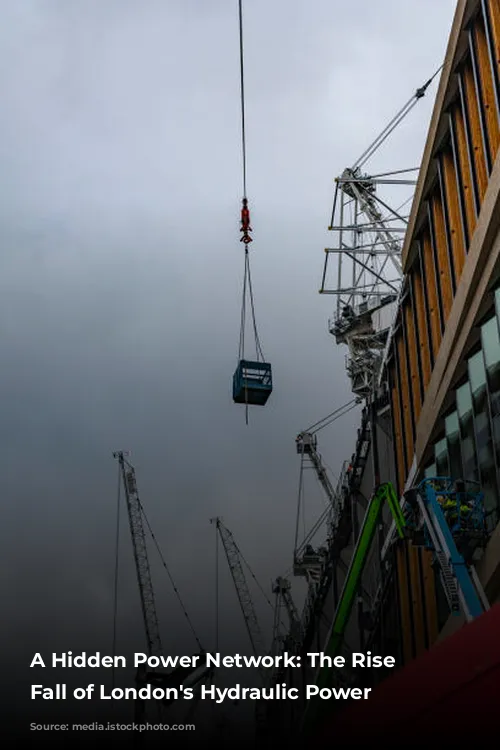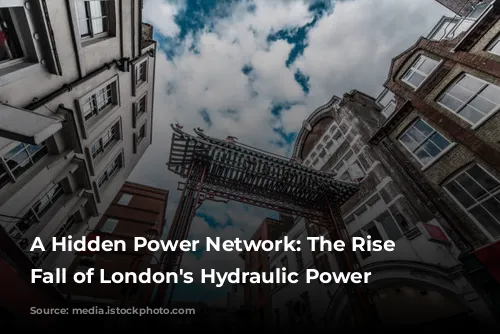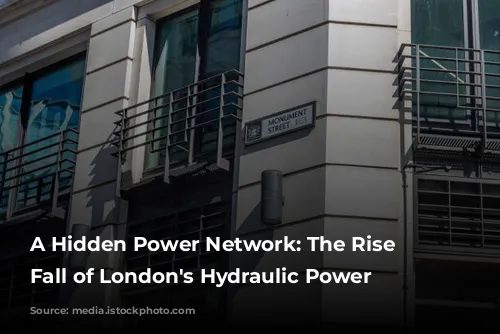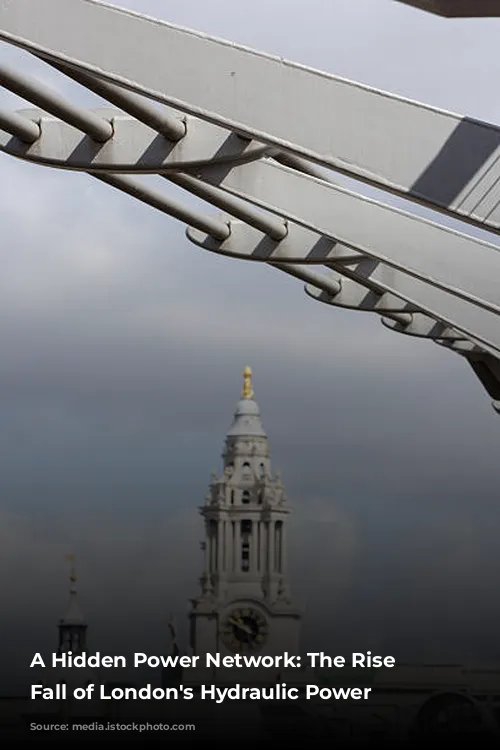Imagine a vast network of pipes, snaking beneath the bustling streets of London, carrying not water for drinking, but powerful hydraulic pressure. This was the reality of the London Hydraulic Power Company, a pioneering force in Victorian engineering, which brought a cleaner and more efficient power source to the city.
A Hydraulic Revolution
The London Hydraulic Power Company was born in 1883, its mission: to transform London’s power landscape. The company was the brainchild of visionary engineers, a merger of two earlier companies, each striving to harness the power of hydraulics. The result? A network of high-pressure water mains, stretching across central London, from Hyde Park to Docklands, delivering a force that would revolutionize industry and daily life.
Imagine the hustle and bustle of London, with factories and workshops powered by steam engines, creating a smoky haze and clanging noise. The Hydraulic Power Company offered a cleaner, more compact solution. Their network powered everything from workshop machinery and cranes to the impressive stage machinery of London’s theatres, including the iconic revolving stages of the Palladium and Coliseum. Even the famous Tower Bridge relied on the hydraulic system for its backup mechanism.
A Force of Nature
The power behind this network came from five hydraulic power stations, each a marvel of Victorian engineering. Driven by coal-fired steam engines, these stations pumped water straight from the Thames, keeping it warm in winter to prevent freezing. This water, under immense pressure – a staggering 800 pounds per square inch! – was then channeled through the intricate network of pipes.
But how was this power stored? The answer lies in hydraulic accumulators, large, vertical pistons, weighted down with heavy counterweights. These accumulators acted as a buffer, storing the pressurized water and ensuring a constant flow to power the city.

A Network of Pipes: A City Under Pressure
The network wasn’t just confined to the streets above. Pipes crossed the Thames on bridges, even diving beneath it through the Tower Subway and the Rotherhithe Tunnel. This ambitious project brought power to the heart of the city, enabling a smoother, more efficient operation.
The demand for this innovative power source was undeniable. By 1893, the system was pumping over 6.5 million gallons of water each week, a figure that would grow to an astounding 32 million gallons by 1933. This was a testament to the impact the Hydraulic Power Company was having on London’s development.
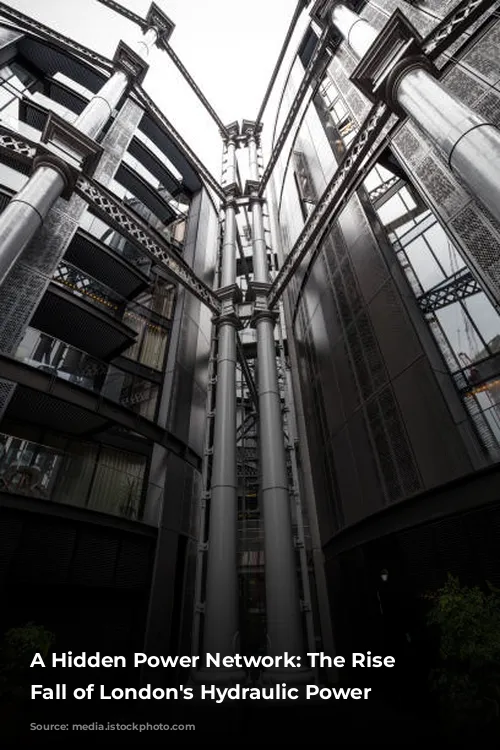
The Rise of Electricity: A New Power Takes Over
As with all technological advancements, the London Hydraulic Power Company faced a formidable challenge: the rise of electricity. Electricity, with its versatility and clean energy, started to claim its place in the city. By 1904, the company began to feel the pressure, as electricity’s popularity grew.
The Hydraulic Power Company responded by adapting, gradually replacing their steam engines with electric motors. But the age of hydraulics was drawing to a close. Despite its impressive network, stretching over 180 miles, the power of electricity was simply too strong to resist.
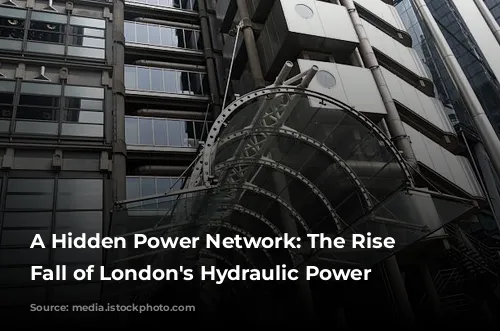
A Legacy Reimagined
The London Hydraulic Power Company officially closed its doors in June 1977. Its network, once a vital lifeline for the city, became a relic of the past. However, the company’s story doesn’t end there.
Its vast network of pipes, a testament to Victorian engineering prowess, found a new purpose. Mercury Communications, a telecommunications company, saw the potential of these pipes as a conduit for cables. The company acquired the Hydraulic Power Company, repurposing the network for modern communication needs.
And what of the Wapping Hydraulic Power Station, the last to close its doors? It transformed into an arts center and restaurant, breathing new life into the historic site, reminding Londoners of the hidden power network that once fueled their city. The story of the London Hydraulic Power Company is a reminder of the constant evolution of technology, and the enduring legacy of Victorian ingenuity that continues to shape our modern world.
